法国法郎
出自 MBA智库百科(https://wiki.mbalib.com/)
法国法郎(French Franc,原符号:F.F.;Fr.Fc.; F.FR.,标准符号:FRF)
目录 |
法郎的诞生有一段历史掌故。1356年,正值英法“百年战争”正酣之际,法兰西国王让二世在法国西部的普瓦提埃一役中失利,被英军俘获,沦为阶下囚。英方提出了释放他的苛刻条件:交纳300万金路易,否则决不放人。让二世在伦敦被囚禁了4年之后,最终如数交纳了这笔巨额赎金,才得以返回法国。1360年12月5日,获释后的让二世国王签署一道敕令,决定铸造含纯金3.87克的硬币来纪念这一历史事件。硬币的正面是让二世在战马上身披铠甲、手执利剑的英武形象,意为国王获得自由,返回法国。根据国王的旨意,这种新钱币就以“自由”命名。“自由”一词的法文是Franc,音译为中文便是“法郎”。如果从1360年“法郎”金币的铸造算起,法郎作为货币至今已经有整整638年的历史,堪称世界上最古老的货币之一。
法郎虽然历史悠久,但它走过的道路却坎坷不平。
让二世创立了法郎,但却未能从此树立它作为官方货币的地位。15世纪中叶,查理七世废除了法郎,恢复了原来的货币———金路易。文艺复兴时期,金路易又被“代斯顿”所代替。“代斯顿”这个货币名称来自意大利,原意为“脑袋”。法王路易十二在意大利战争期间对意大利货币上刻有历届国王头像这一点十分欣赏,他回国后,便下令把自己的头像也铸造在法国的货币上,“代斯顿”因而得名。
1789年,法国大革命爆发,法郎在沉寂了300余年后得以重新露面。法国大革命后推行公制,1795年,法郎开始作为标准货币在法国流通,取代原有的里弗尔。1法郎等于100生丁(centimes),含5克成色90%的白银。此外还铸造了含6.45克黄金、价值20法郎的拿破仑金币。1803年,拿破仑颁布法令,确立了法郎的国家货币地位。从此,法郎就一直是法国币制的基本单位。随着法国经济实力的增强,法郎成为当时欧洲最坚挺的货币,并且形成了一个以法国为中心、包括意大利、瑞士和比利时的法郎区。拿破仑三世甚至在1867年提出过建立以法郎为参照的世界货币联盟的构想。
法郎最初为金银复本位货币。1865年在法国的倡导下,法国、意大利、瑞士和比利时在巴黎召开会议,宣布组建拉丁货币同盟(希腊、西班牙、罗马尼亚、委内瑞拉等国后来加入),实施基于法国体系的金银复本位货币制度。其成员国承诺只铸造100法郎、50法郎、20法郎、10法郎和5法郎的金币,以及5、2、1法郎和50、20生丁的银币。美国在南北战争之后发行的5美元鹰徽金币和英国的沙弗林金币(Sovereign,合30先令或1.5英镑)价值均接近25法郎,因此两国提出以法国发行25法郎金币的方式同拉丁货币同盟建立联系,但这一建议被担心货币重铸成本的法国拒绝。
由于金银比价在19世纪后期不断跳动,导致金银复本位制度的崩溃。在法国,金银比价从1807年至1870年的1:15变为1874年的1:16.17,黄金大量流出,法国不得不于1876年实行金本位制度,废止5法郎银币的流通,并规定法郎含金量为0.2903225克。
第一次世界大战后,法国采取纸币通货膨胀的政策,法郎发生贬值,到1922年时,其购买力已跌至1915年的43%,同英镑的比价从1914年的25.22:1跌到1926年的240.2:1。法国不得不终止金本位的实行。1928年法国制订新货币法,规定法郎含金量为0.065克,仅相当于一战前的1/5。
第一次世界大战期间,法郎币值与黄金脱钩。此时美国国力日强,美元蒸蒸日上,法郎失去了曾经的辉煌。
第二次世界大战后,法国再度发生恶性通货膨胀,同英镑比价跌至接近1:1000。1960年发行新法郎(Nouveau Franc),确定其币值为旧法郎的100倍,相当于0.1802克黄金。
1958年,戴高乐总统当政后,决定推出价值为旧法郎100倍的新法郎,取代不断贬值的旧法郎。此举保住了法国货币的地位。然而,到了二十世纪80年代,法郎再次发生危机,美元与法郎的比价一度跌至1:10。法郎的跌宕起伏使法国人明白了一个道理:光靠法国自身努力是难以抗衡美元的,欧洲必须联合起来才能真正强大,也才能拥有稳定的货币。
停止流通期限
停止流通期限:2002.02.17 ,商业银行停止收兑期限:2002.06.30 , 中央银行停止收兑期限:纸币10年,辅币3年
2002年1月1日欧元发行之后,法郎已逐渐的停止流通,法国的国家银行,法兰西银行在2002年已停止兑换某些法郎旧钞,而2005年后,旧钞中的高乃依(Corneille)系列﹙有5法郎、100法郎﹚或10法郎白辽士(Berlioz)系列的钞票也不能再换欧元。届时在法国流通的法郎将只剩下几种﹙可用到2012年2月17日﹚,分别是:
- 500法郎“皮埃尔和玛丽·居里”(Pierre et Marie Curie,1995年3月发行),
- 200法郎的“居斯塔夫·艾菲尔”(Gustave Eiffel,1996年10月发行)
- 100法郎的“塞尚”(Paul Cezanne,1997年12月发行),
- 50法郎的“圣·埃克苏佩里”(Saint-Exupery,1993年10月发行)
- 20法郎的“德彪西” (Debussy,1981年10月发行)。
下列旧钞则可用到2009年
- 500法郎的“帕斯卡尔”(Pascal,1969年1月发行),
- 200法郎的“孟德斯鸠” (Montesquieu,1982年7月发行),
- 100法郎的“德拉克罗瓦”(Delacroix,1979年8月发行)
- 50法郎的“康坦·德·拉图尔” (Quentin de La Tour,1977年4月发行)
除了在法国使用,法国法郎也曾是摩纳哥和安道尔的流通货币。现在,这两个国家也都已转用欧元。
1、纸张
法国法郎的纸张极薄、只有普通纸张的二分之一。纸张呈布纹状,纤维长,密度高,挺括度好、不易断裂、经长时间使用不起毛,不松软。
2、对印
它不象其它钞票那样,在钞票的某一部分单独印有对印图案。法国法郎的人像是两面一次对印,正、背面人像相同,透视完全重合。另外,钞票的外眶、水印窗及部分面额数字都成对印。对印技术是钞票防假的重要手段之一,无疑法郎的这种对印方法,对钞票防假是非常有效的。
3、主要图案的印刷
法国法郎钞票的主要图案是以彩色套印成图案后,再通过黑色凹印,突出了图案的主题、使图案色彩丰富、清晰、更富有立体感,有油画的效果。
4、序号
法国法郎有三组数字,一组是连号、通常是由九位或十位阿拉伯数字组成,在钞票正面的中上方。另一级是校对号,由五位或六位数字组成,它与连号的后几位相同。还有一组是检查号码,它是由一个字母和两个或三个阿拉伯数字组成。
1993年以后法兰西银行先后发行了50法郎、200法郎及500法郎新版钞票。新版钞票改变以以往的印刷风格、纸张不如原来薄、增加了开窗式安全线。人像也不再是正背对印、面改为各种图案的互补对印,官员签字改在钞票的背面。取消了原来的校对号对号码,连号改为正背面各一组。
1FRF=100centimes(生丁,分)
辅币单位是生丁(centime)。
辅币进位: 1法郎=100生丁(CENTIMES)
流通的纸币面额有20、50、100、200、500法郎;
硬币面额有5、10、20生丁和1/2、1、2、5、10法郎。
法国法郎2002年2月17日正式退出历史舞台,2002年7月1日,法国法郎完成其历史使命,退出流通领域。
当地时间2002年2月18日凌晨,法国法郎在进入午夜之后正式停止流通,从此法国人告别了流通了约600年的法国货币———法郎。而对法国政界人士来说,朝野都在争着将这一次货币转换成功的功劳占为已有,因为离大选已经不远了。
在法国成为第3个以欧元作为其唯一货币的欧洲国家后,法国财政部进行了低调的纪念法郎结束的仪式。欧元区的12个国家在2002年1月1日都开始使用欧元。其中荷兰和爱尔兰先于法国停止使用各自国家的传统货币。其余9国在2002年2月28日停止使用各自的传统货币。
The History of the French franc
One of Europe's oldest currencies, the french franc was first minted in 1360 to pay a King's ransom for the release of King John the Good. It reappeared in a variety of manifestations over the course of French history, often in times of trouble. The currencies name comes from the inscription reading Johannes Dei Gratia Francorum Rex ("Jean by the grace of God King of the French") and its value was set as one livre tournois (a money of account). Francs were later minted under Charles V, Henri III and Henri IV. Louis XIII of France stopped minting the franc in 1641 (replacing it with the Écu and Louis d'Or), but use of the name "franc" continued in accounting as a synonym for the livre tournois.
During the French Revolution the franc was established as the national currency by the French Revolutionary Convention in 1795 as a decimal unit (1 franc = 100 centimes). The value of the franc was set at 4.5 grams of fine silver. This was slightly less than the livre tournois which was valued at 4.505 grams of silver, but in 1796 the franc's value was set at 1.0125 livres or (1 livre, 3 deniers), reflecting in part the past minting of sub-standard coins.
In 1803, the "franc germinal" (named after the name of the month in the revolutionary calendar) was established, creating a gold franc containing 9/31 g (290.32 mg) of fine gold. From this point, gold and silver-based units circulated interchangeably on the basis of a 1:15.5 ratio between the values of the two metals (bimetallism). This system continued until 1864, when all silver coins except the 5 franc piece were debased from 90% to 83.5% silver without the weights changing.
1865 saw the formation of the Latin Monetary Union of which France was a founding member. The Latin Monetary Union was an attempt to unify several currencies into a single currency that could be used in all member countries. The Union was formed at a time when most currencies were still made out of gold and silver. The Union was originaly made up of four countries: France, Switzerland, Belgium and Italy. The common currency was based on the French franc germinal, with the name franc already being used in Switzerland and Belgium, whilst other countries continued to use their own names for the currency. Thus 5 Italian lire was equal to 5 french francs. The Union was later joined by Spain and Greece in 1868, and Romania, Austria, Bulgaria, Venezuela, Serbia, Montenegro, San Marino and the Papal States in 1889. In 1873, the Monetary Union went over to a purely gold standard of 1 franc equal 9/31 grams of gold.
With outbreak of World War I caused France to leave the gold standard of the Latin Monetary Union. The war severely undermined the franc's strength, as war expenditure, inflation and postwar reconstruction, financed partly through the printing of ever more money, reduced the franc's purchasing power by 70% from 1915 to 1920 and a further 43% from 1922 to 1926. France returned to the gold standard from 1928 - 1936, France left the gold standard in 1936 and the value of the French franc continued to slide.
During the German occupation of France, the franc was a satellite currency of the German Reichsmark. The coins were changed, with the words "travail, famille, patrie" (work, family, fatherland) replacing the Republican triad "Liberté, Égalité, Fraternité" (Freedom, Equality, Brotherhood) and the symbol of the Vichy regime added.
After the close of World War II the value of the French franc continued to slide further, until in 1959 the value of the French franc was less then 1/40 of its 1935 value.
The New Franc In January 1960 the French franc was revalued at 100 existing francs. Old franc pieces continued to circulate as centimes (none of which were minted for the first two years), 100 of them making a nouveau franc (the abbreviation NF was used on banknotes for some time). Inflation continued to erode the currency's value but at a greatly reduced rate comparable to other countries so when the value of the franc was pegged to that of the euro in January 1, 1999, the new franc was worth less than an eighth of its original value.
Interestingly, after revaluation and the introduction of the new franc, many French people continued using old francs (anciens francs), to describe large sums. For example, lottery prizes were often advertised in amounts of centimes, equivalent to the old franc. This usage continued right up to when franc notes and coins were withdrawn in 2002.
From January 1, 1999, the value exchange rate of the French franc against the euro was set at a fixed parity of 1 EUR=6.55957 FRF. Euro coins and notes replaced it entirely between January 1 and February 17, 2002. Prior to the introduction of the euro banknotes and coins, French banknotes circulated in denominations of 20, 50, 100, 200 and 500 francs. Coins were issued in denominations of 5, 10, 20 and 50 centimes, 1, 2, 5, 10 and 20 francs. The ISO 4217 code for the currency was FRF.
Usage of the French Franc around the Globe Just Prior to the introduction of the euro, French Banknotes and coins were used in the independent countries of Andorra and Monaco and in the French possessions of French Guiana, Guadeloupe, Martinique, Mayotte, Reunion and St. Pierre et Miquelon.
Several now independent former French colonies use currencies with their exchange rate tied to the value of the French Franc. See related currencies at the bottom of this page for a complete list.
Historical Exchange Rates The table below gives the average yearly exchange rates of the franc from 1948 until the euro's introduction in 2002. The rates show are the number of French francs per U.S. Dollar and per British pound.
Year US Dollar (USD) Br. Pound (GBP) Year US Dollar (USD) Br. Pound (GBP) 1948* 308.81 1244.50 1976 4.8029 8.630 1949* 331.96 1235.70 1977 4.9052 8.556 1950* 349.68 979.10 1978 4.5131 8.654 1951* 349.96 979.90 1979 4.2544 9.010 1952* 349.97 979.90 1980 4.2256 9.820 1953* 349.96 979.90 1981 5.4346 10.921 1954* 349.97 979.90 1982 6.5721 11.481 1955* 349.97 979.90 1983 7.6213 11.552 1956* 349.79 979.40 1984 8.7381 11.624 1957* 361.64 1012.60 1985 8.9852 11.531 1958* 419.74 1175.30 1986 6.9261 10.143 1959* 493.71 1382.40 1987 6.0107 9.823 1960 4.9371 13.824 1988 5.9569 10.596 1961 4.9371 13.824 1989 6.3801 10.439 1962 4.9371 13.824 1990 5.4453 9.669 1963 4.9371 13.824 1991 5.6421 9.951 1964 4.9371 13.824 1992 5.2938 9.291 1965 4.9371 13.824 1993 5.6632 8.494 1966 4.9371 13.824 1994 5.5520 8.497 1967 4.9371 13.824 1995 4.9915 7.877 1968 4.9371 11.849 1996 5.1155 7.981 1969 5.1942 12.466 1997 5.8367 9.555 1970 5.5542 13.330 1998 5.8995 9.770 1971 5.5406 13.483 1999 6.1579 9.963 1972 5.0445 12.599 2000 7.1343 10.794 1973 4.4528 10.909 2001 7.3324 10.555 1974 4.8096 11.244 2002 6.9815 10.464 1975 4.2878 9.4850
* Rates from 1948 - 1959 are shown in old francs.
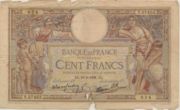
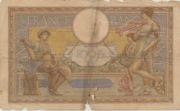
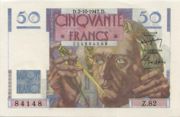
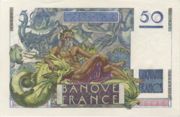
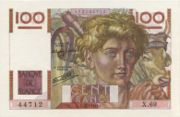
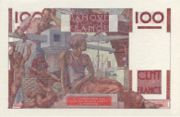
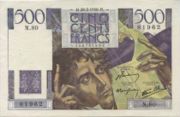
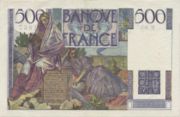


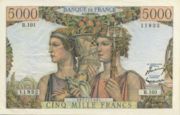
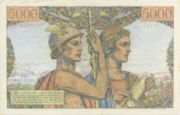






































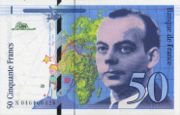
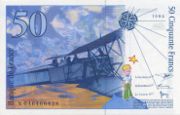
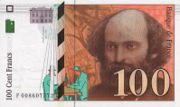
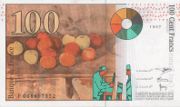




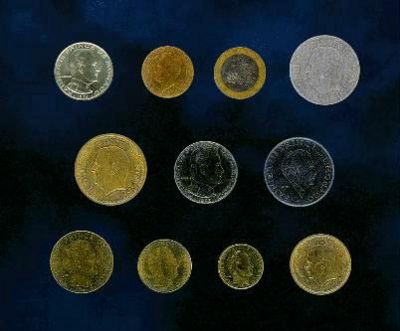








为什么没有金币的图片遗憾